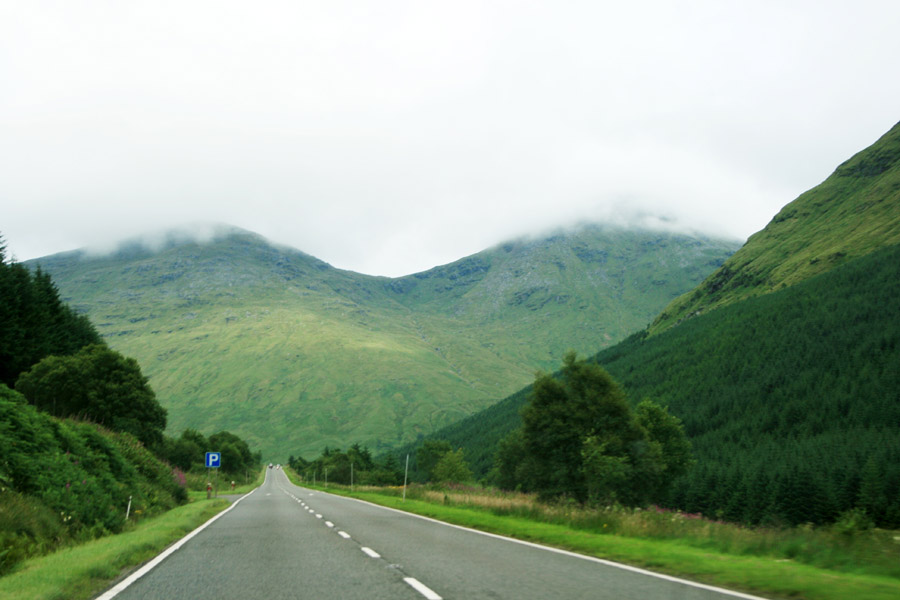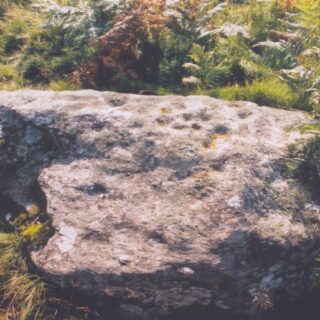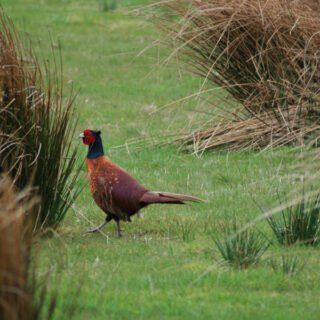Today we were visiting relatives on the Rosneath peninsula, so we took advantage of being further west than usual to do some sight-seeing. Leaving Kilcreggan on the Barbour Road we were rewarded with magnificent views down to Loch Long, which we followed all the way up to Arrochar.
Rounding the head of the loch we continued along the road as it climbs steeply along the edge of The Cobbler to Rest-and-be-Thankful. Where we did just that, stopping to take photos back down a slightly misty Glen Croe.

Beyond Rest-and-be-Thankful the road drops down to the shore of Loch Fyne, which it follows around to Inveraray, and our main destination today, Inveraray Castle.
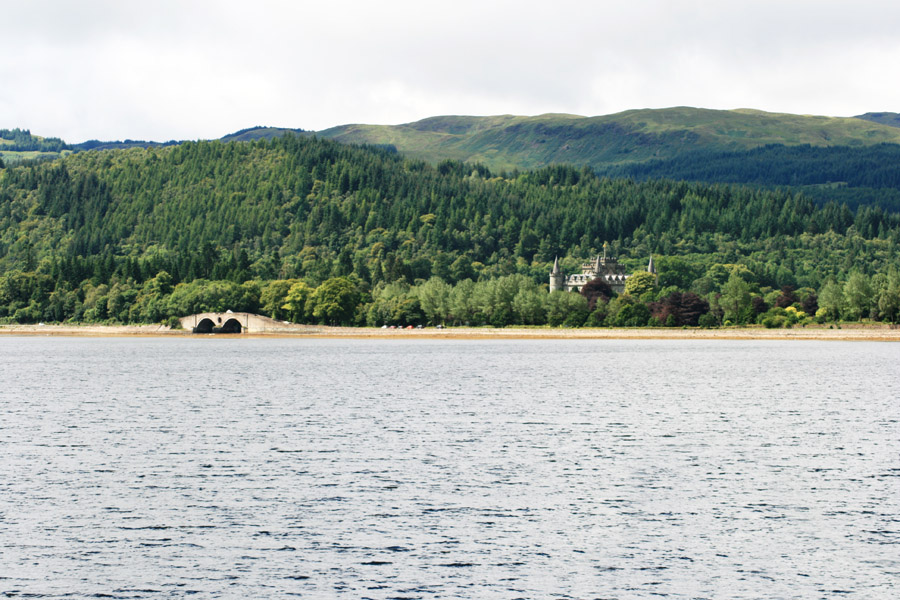
Originally the village of Inveraray stood within what are now the grounds of Inveraray Castle. But the village was moved to its current location on the shore of Loch Fyne in the second half of the 18th century during extensive estate improvements by the Duke of Argyll. The idea was to simultaneously improve the Duke’s views over his estate and also the lives of the villagers. The result is a picturesque collection of white-washed buildings.
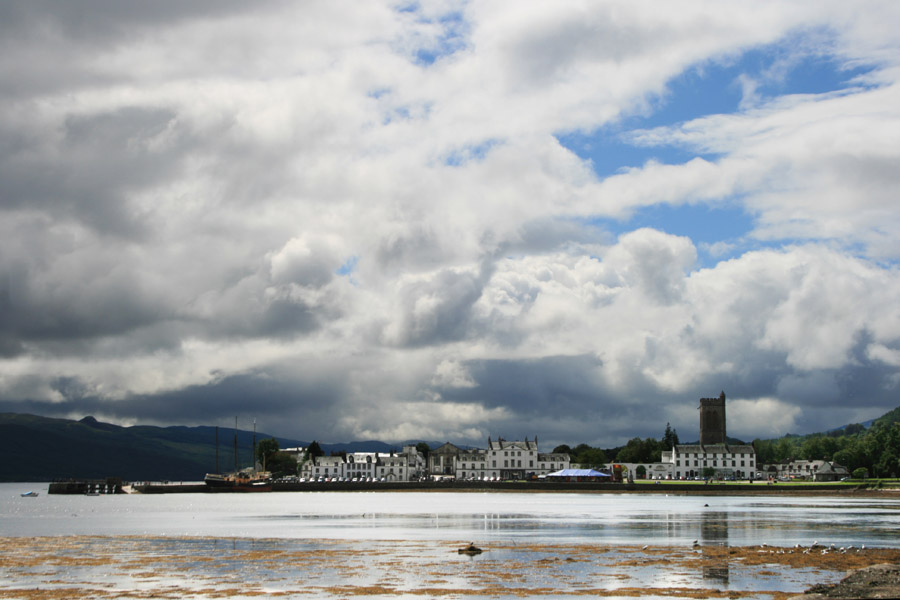
Built between 1746 and 1785 as the seat of the Duke of Argyll, Inveraray Castle was intended as a luxurious residence to replace Old Inveraray Castle, which stood just in front of the new castle, and whose position is marked out by three white posts.

The new castle consists of a rectangular three storey central block with a mock castellated square tower protruding from its top. At each of the four corners of the main block is a round tower topped with distinctive conical roofs.
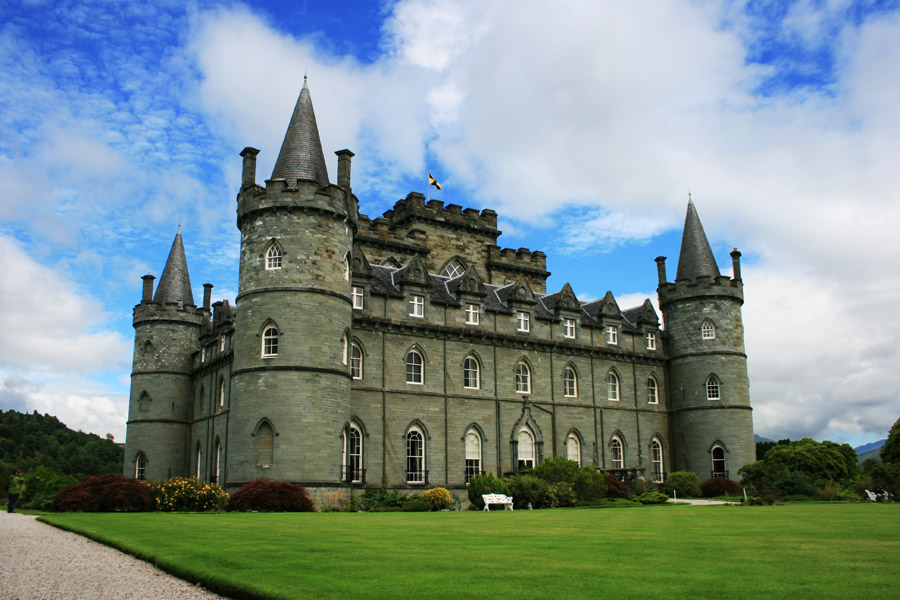
Around the bottom of the castle is a mock moat which gives access to the basement level.
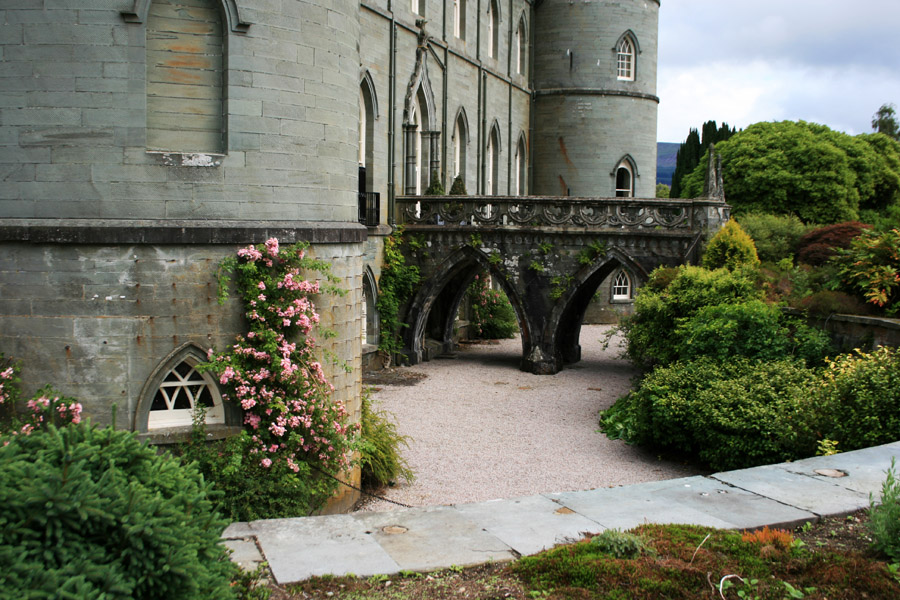
As befits a castle of this status, it stands at the centre of beautifully-laid out gardens.

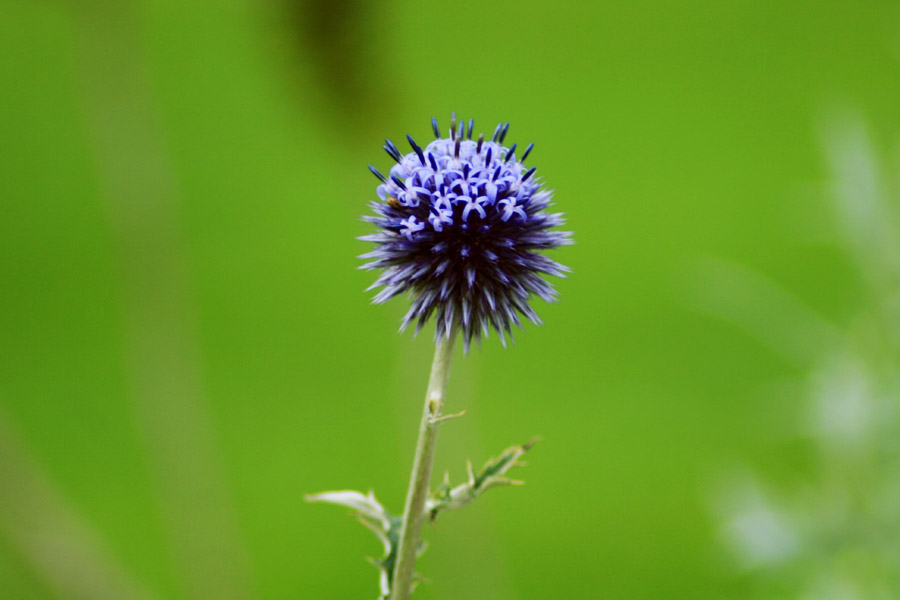
Beyond the ornamental gardens are fields of grass, kept trim by sheep and Highland cows.


That wasn’t the only wildlife we saw, as there was a Golden Eagle circling high above.


On the way out of the castle there is a shinty pitch, on the edge of which is the Inveraray Castle standing stone.
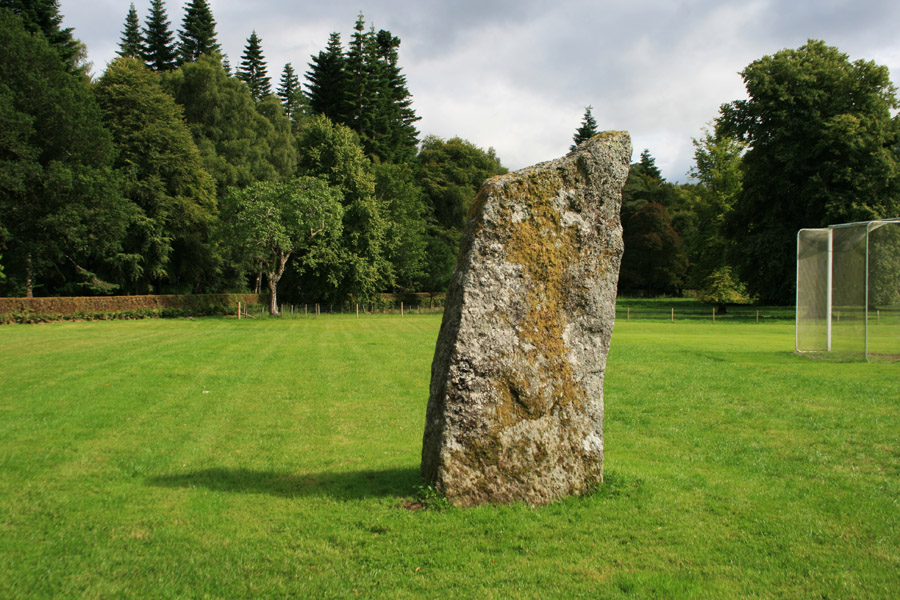
Measuring around 2.8m tall, this pointed slab of granite is an impressive monument.
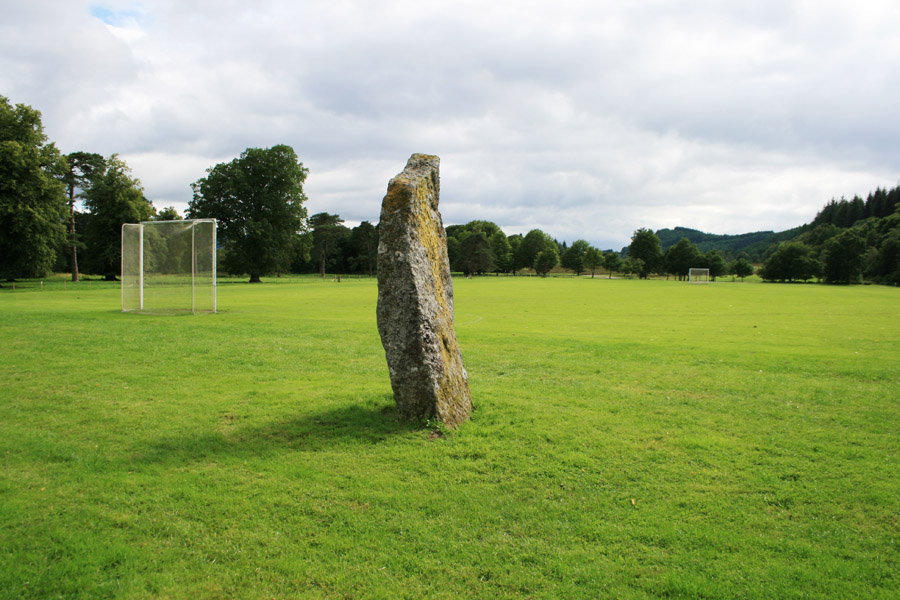
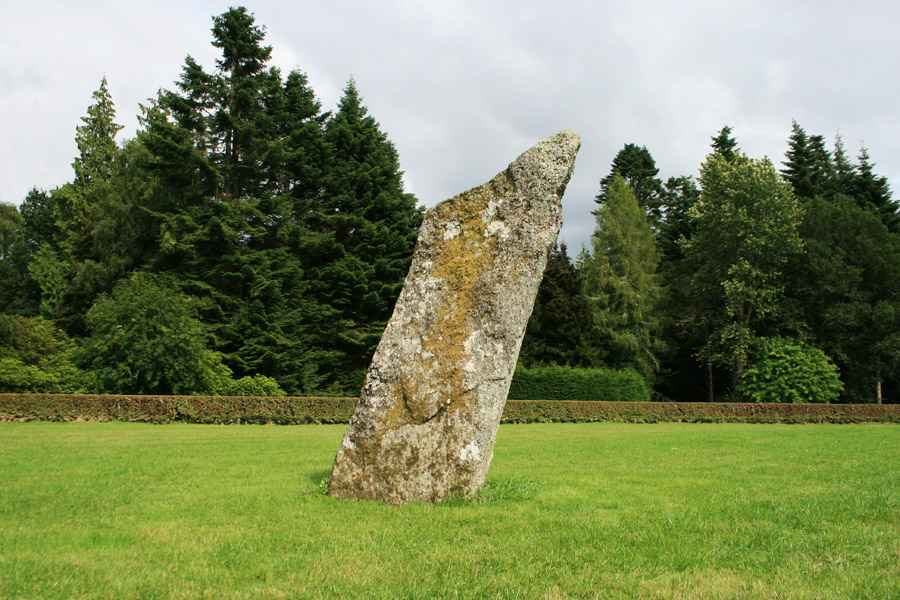
After a quick drive around Inveraray, we retraced our route back around the head of Loch Fyne, taking a slight detour onto the A815 to look for a view of Dunderave Castle on the opposite side of the loch.

Built in 1598 by the MacNaughtons to replace their older Dubh Loch Castle, it is now a private home.
Returning to the A83, we started our long journey home, beginning with a drive through Glen Kinglas.
